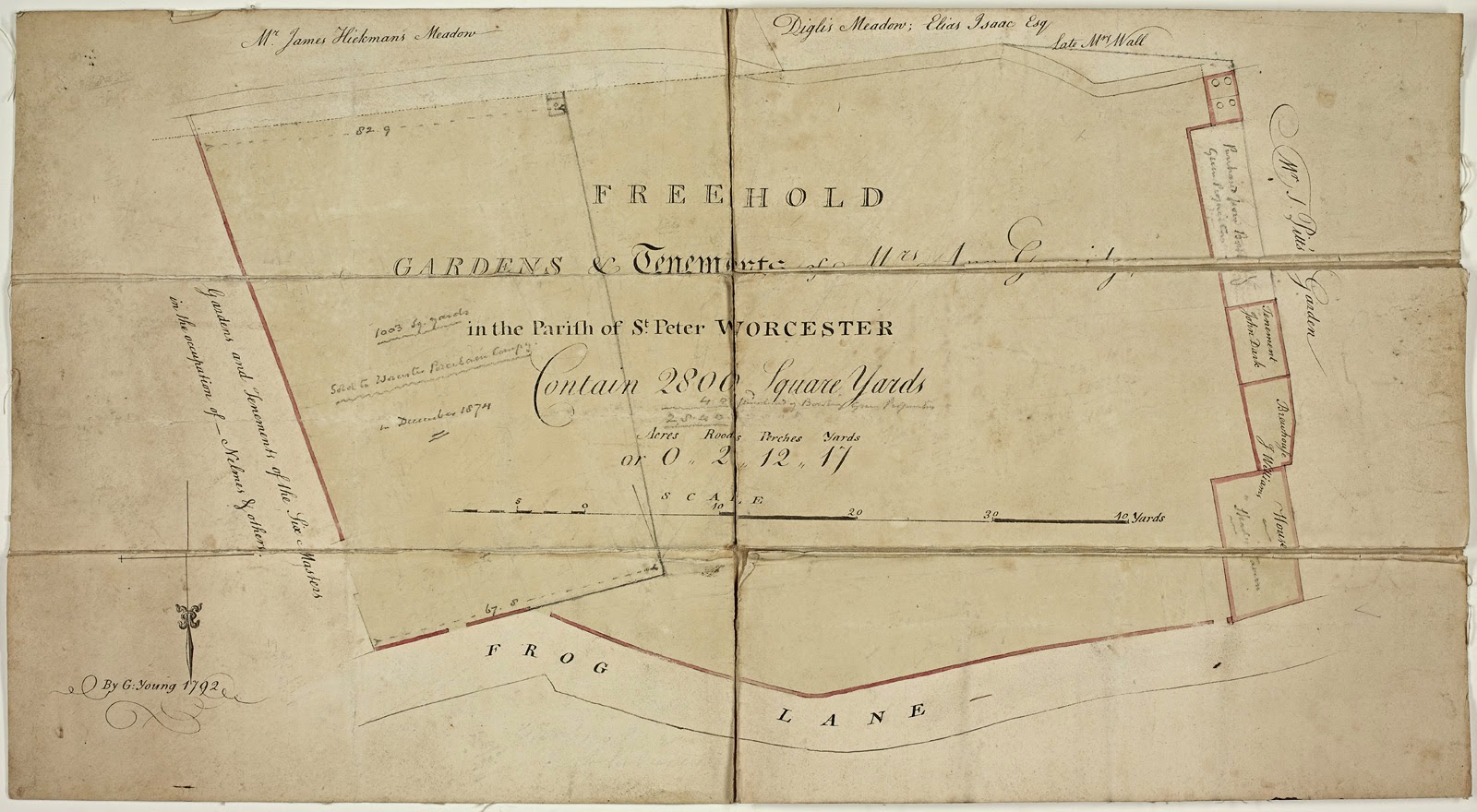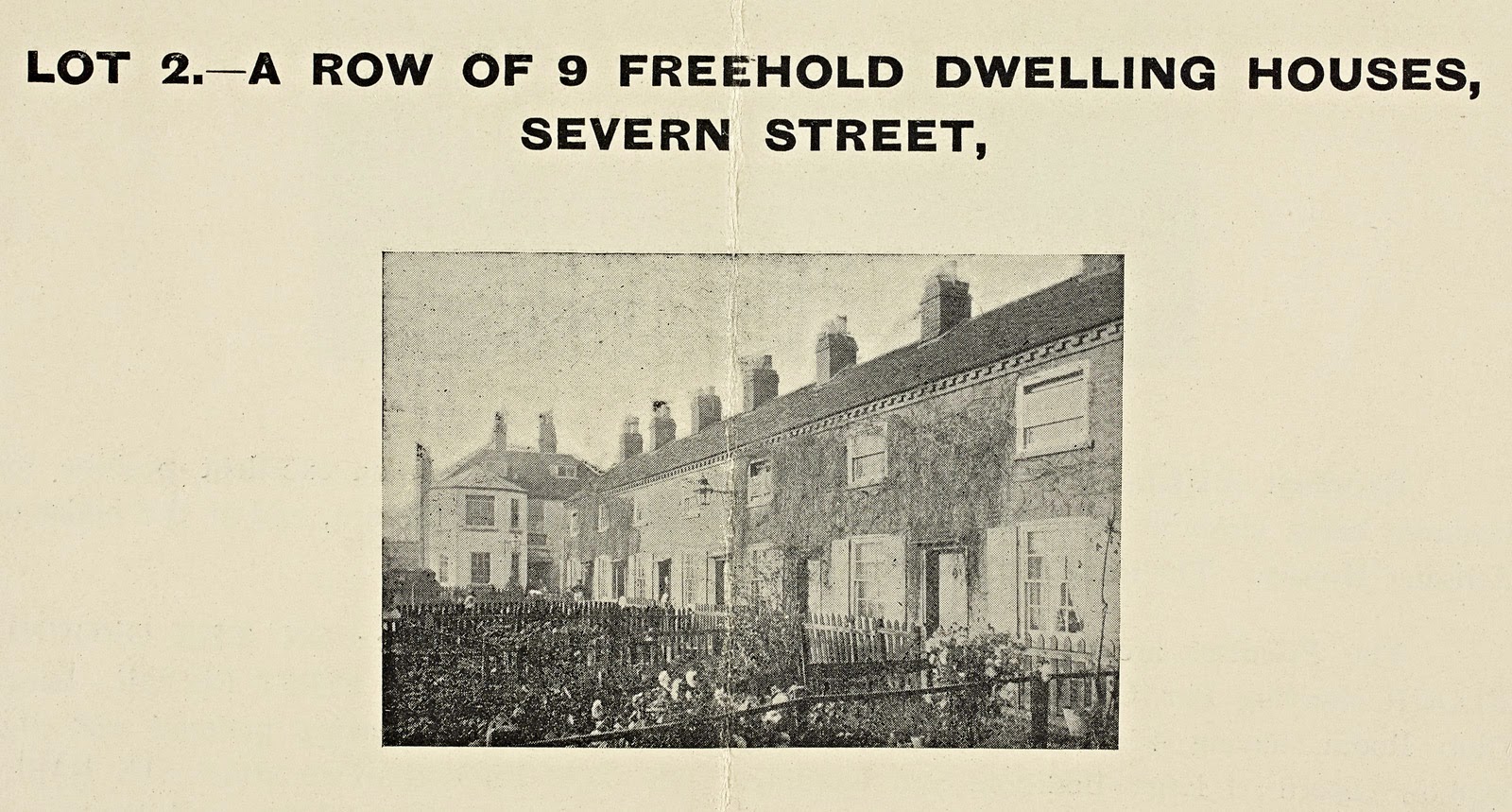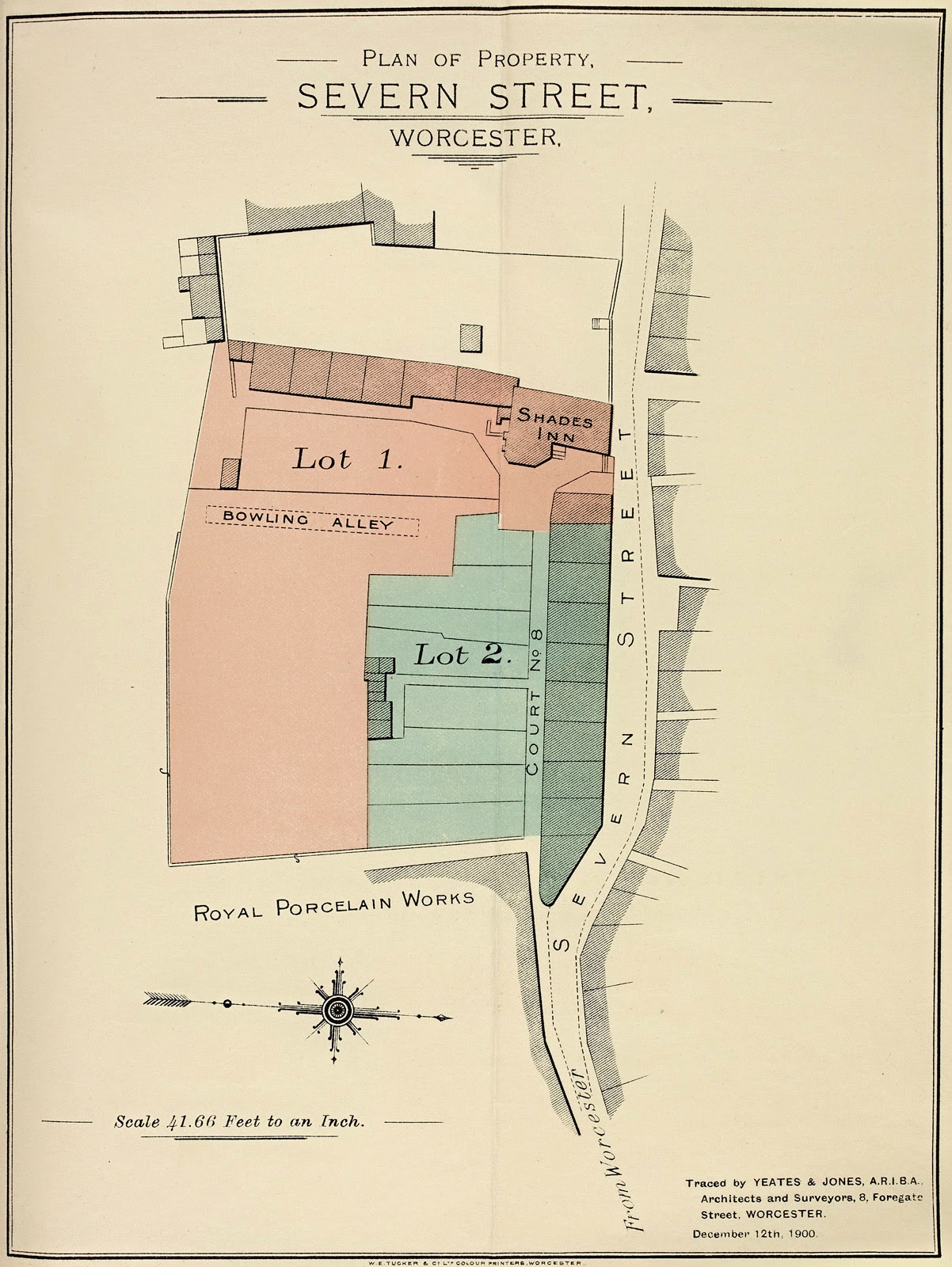Explore Your Archive: Early History of Dandy Row
- 10th November 2014
This piece of land was purchased in 1792 from a Mrs Ann Gamidges widow, by Mr Fincher and the row was built soon after. In early years of the 19th century the top half of Frog Lane that was behind the city wall became High Timber Hill Street. The rest of the lane remained Frog Lane until the late 1820’s when it was renamed Diglis Street. The name apparently fitted with its new image. There is some debate as to the meaning of the word Diglis, but it may have originated from the Norman French D’Eglise ‘meaning of the church’. Lands in Diglis were some of the first outside the City to be given to the Priory.
Forgotten Worcester. H.A. Leicester Dated 1930.
‘On Christmas Day, that dirty unpleasant thoroughfare, Frog-lane which has been under-drained and re-paved, was lighted with gas, and elevated to the rank of Street by name of Diglis-street. For this improvement, citizens are chiefly indebted to the liberality and exertions of Mr Daukes, of Diglis House.’
Worcester Miscellany March 1829 page 37.
By 1870 High Timber Hill Street and Diglis Street were finally united under the name of Severn Street
Dandy Row was made up of nine buildings. Eight of the houses had a front living room containing an oven grate and side cupboards and a small adjoining back room. There were 2 bedrooms and a strip of garden to the front of the houses. The ninth house was much larger and comprised of a small front shop with living room behind, 2 bedrooms and a cellar. The house had gas laid on to the ground floor. Outside the properties were 2 party brew houses with a furnace, sink and a town water tap. There were also 3 party W.C’s.
By 1898 The Littleburys Directory listed The Shades Public House as part of Dandy Row and by 1900 the residents of Dandy Row such as the Wale family had been living there 30 years, the Webb family 50 years, the Baylis family 10 years and the Martin family 10 years.
Dandy Row was put up for sale in 1900 when the land owner Joseph Williams died. The sale particulars state that the row would make an annual rent of
76 pounds and 14 shillings. It was purchased by Thomas Boyce.
The sale particulars for Dandy Row and the plan of 1792 are from the Worcester City Archives. The copies are with kind permission of Worcester City Council, whose early archive is held by the Worcestershire Archive and Archaeology Service.
By Angela Downton
.jpg)
.jpg)
.jpg)